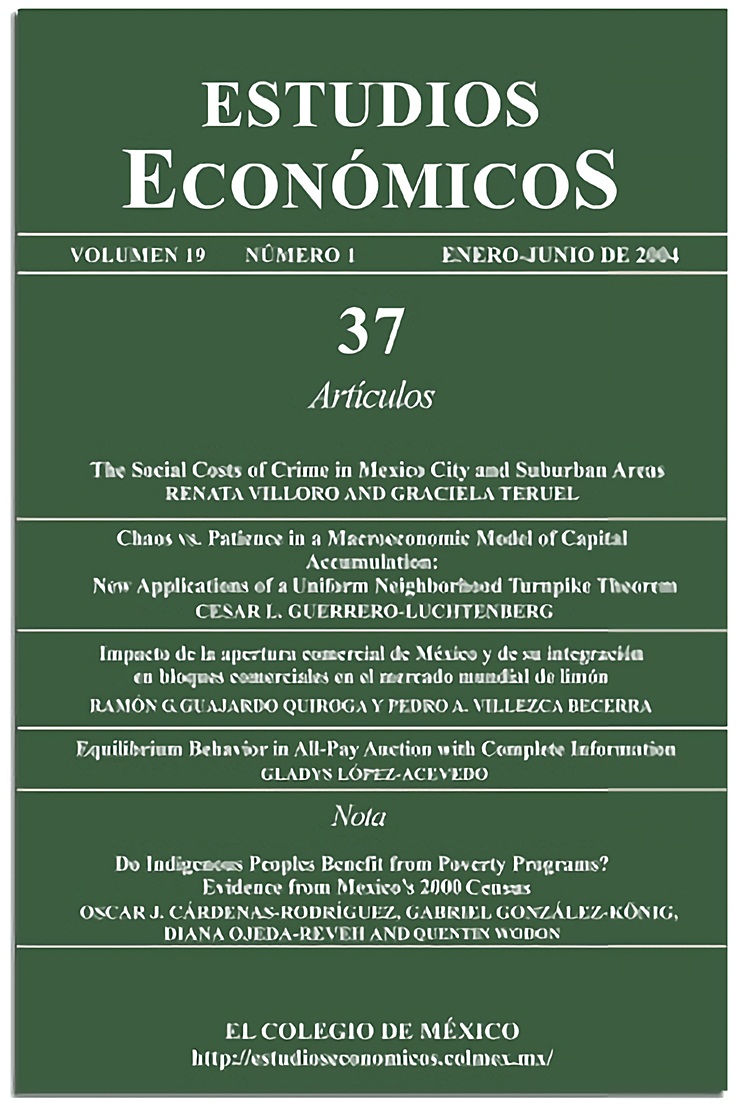Articles
Chaos vs. patience in a macroeconomic model of capital accumulation: New applications of a uniform neighborhood turnpike theorem
Published 2004-01-01
Keywords
- macroeconomics,
- Guerrero-Luchtenberg theorem,
- discount factor
How to Cite
Guerrero Luchtenberg, C. L. (2004). Chaos vs. patience in a macroeconomic model of capital accumulation: New applications of a uniform neighborhood turnpike theorem. Estudios Económicos De El Colegio De México, 19(1), 45–60. https://doi.org/10.24201/ee.v19i1.179
Abstract
We present in this paper some new results on the strong incompatibility between chaos and patience in a macroeconomic model of capital accumulation. These results are explicit and non-trivial applications of the general theorem proven in Guerrero-Luchtenberg (2000), in which the statement (Theorem 2) ‘Chaos vanishes as the discount factor tends to one’, is formally presented. Here, we show precisely how this statement applies to some important indicators of chaos not analyzed before. Furthermore, we will show that, for a given family of optimal growth models, there is a bound on the discount factor.
Downloads
Download data is not yet available.

